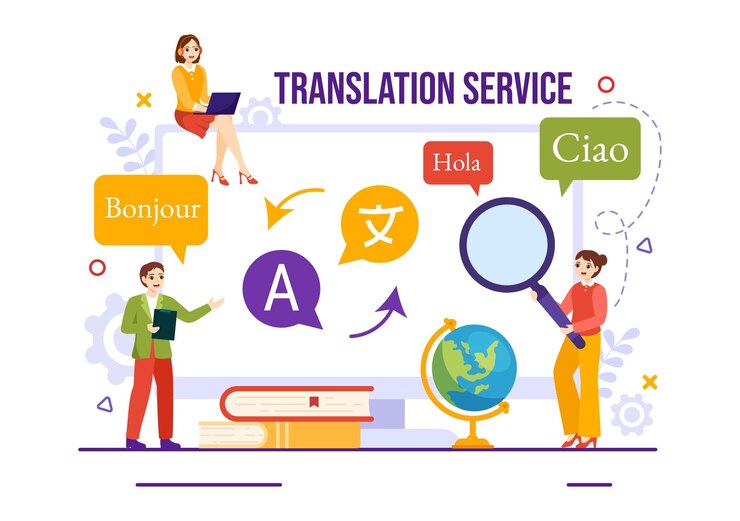In today’s interconnected world, translation plays a pivotal role in bridging linguistic and cultural gaps. Whether it’s for business, diplomacy, or literature, the need for accurate and efficient translation services has never been greater. One tool that has gained significant attention in this domain is “vertėjjas.” This article delves into the concept of vertėjjas, its evolution, and its importance in today’s globalized society.
1. What is Vertėjjas?
Vertėjjas is a term that originates from Lithuanian, meaning “translator.” In essence, vertėjjas refers to an individual or a tool specialized in converting text or speech from one language to another. With advancements in technology, the term has also been associated with software and applications designed to facilitate translation processes.
2. The Historical Evolution of Translation
The practice of translation dates back thousands of years, with early civilizations recognizing the need to communicate across different languages and cultures. Ancient translators played crucial roles in facilitating trade, diplomacy, and the exchange of knowledge.
The evolution of translation has been marked by significant milestones, from handwritten manuscripts and early dictionaries to the emergence of machine translation in the 20th century. Vertėjjas, as a concept, reflects this evolution, blending traditional translation methods with modern technology to meet the growing demands of a globalized world.
3. Vertėjjas in the Digital Age
With the advent of the internet and digital technology, the translation industry has undergone a paradigm shift. Vertėjjas tools and software have become indispensable for businesses, organizations, and individuals seeking to communicate effectively across linguistic barriers.
Modern vertėjjas platforms leverage cutting-edge technologies such as artificial intelligence (AI) and machine learning to deliver fast, accurate, and contextually relevant translations. These advancements have not only improved the quality of translations but have also made them more accessible and affordable for a broader audience.
4. Challenges and Limitations of Machine Translation
While vertėjjas tools have revolutionized the translation industry, they are not without their challenges and limitations. Machine translation algorithms, although sophisticated, often struggle with nuances, idiomatic expressions, and cultural references that are inherent to human languages.
Moreover, the absence of context can lead to inaccuracies and misinterpretations, especially in complex or specialized domains. Despite these limitations, vertėjjas software continues to evolve, with developers continually refining algorithms and incorporating new technologies to enhance translation accuracy and reliability.
5. The Role of Human Translators in the Age of Vertėjjas
Despite the advancements in machine translation, the role of human translators remains irreplaceable. Human translators bring a level of understanding, cultural sensitivity, and linguistic nuance that machines are yet to replicate fully.
In many cases, vertėjjas tools serve as complementary aids for human translators, assisting them in the initial stages of translation and reducing the workload. By leveraging both human expertise and technological capabilities, organizations can achieve higher translation quality and better meet the diverse needs of their target audiences.
6. Applications of Vertėjjas in Various Sectors
The versatility of vertėjjas tools makes them invaluable across various sectors and industries. From e-commerce and tourism to healthcare and legal services, translation plays a vital role in facilitating communication and driving global collaboration.
In the business world, vertėjjas tools help companies expand their reach and tap into new markets by translating websites, marketing materials, and product documentation. In the healthcare sector, translation services ensure that patients receive accurate information and care regardless of their language or cultural background.
7. The Future of Vertėjjas: Towards Seamless Multilingual Communication
As we look ahead, the future of vertėjjas promises exciting possibilities for seamless multilingual communication. Advances in AI, neural machine translation, and natural language processing are poised to further enhance the capabilities of translation tools, making them more intuitive, adaptive, and user-friendly.
Moreover, the growing demand for localization services in the digital content and media industries is expected to drive innovation in vertėjjas platforms, catering to the unique linguistic and cultural preferences of global audiences.
In conclusion, vertėjjas represents a fusion of traditional translation practices and modern technology, offering a glimpse into the future of multilingual communication in our increasingly interconnected world. As the demand for accurate and efficient translation services continues to grow, the role of vertėjjas – whether human or machine – will remain central to bridging linguistic and cultural divides and fostering global understanding and collaboration.

